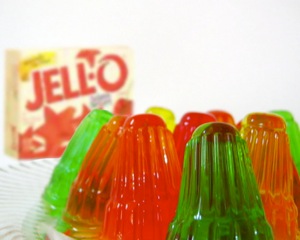-
- Presidential candidates not progressive enough for gays
- Didja’ hear the one about the wisecracking politician?
- New Orleans city employees keep same-sex partners benefits
- Officials: Ledger had six prescriptions, but no illegal drugs
- Documentary on lesbian police officer’s struggle gets nomination
- Kerry, Smith introduce bill to end ‘discriminatory’ HIV law
- National News Briefs
- World News Briefs
dining out
Obscure food facts to share with friends
Published Thursday, 31-Jan-2008 in issue 1049
Even if you’re a frequent patron of restaurants and fast-food eateries or an ambitious home cook, chances are high that some of the nutritional, scientific and historical data of what you put into your mouth has evaded your knowledge banks.
Who knew, for instance, that fortune cookies were actually invented in America, in 1918, by Charles Jung, or that it takes approximately 550 peanuts to make a 12-ounce jar of peanut butter? And tip your hat to New Jersey (a.k.a. the Garden State) the next time you sink your teeth into a stack of eggplant Parmesan, as the area is known for growing two-thirds of the world’s supply of the purple veggie.
Below is a compendium of obscure food facts collected from nutritionists, product manufacturers, chefs and historians that could add quirky fodder to the next meal you consume.
Five Jell-O flavors that flopped over the past decades were celery, coffee, cola, apple, and chocolate.
Florida stone crab claws (available at The Oceanaire Seafood Room Downtown until mid-February) are returned to the ocean after crabbers remove their appendages, which yield fair amounts of sweet and succulent meat. Thin membranes quickly form over their wounds, thus starting the regeneration of new arms and claws.
The tuna melt at Quiznos is a fast pass for gaining weight, boasting the highest calorie and fat totals of any of their sandwiches. The large melt contains more than 2,000 calories and 175 grams of fat. A regular size will cost you 1,420 calories and 118 grams of fat, and the small packs in 770 calories and 60 grams of fat.
Some nutritionists assert that apples are more efficient than caffeine in keeping people awake in the mornings.
Lack of water retention is the primary bane of beef when cooked in the microwave, which causes steaks and other meats to shrink, toughen and discolor. If you must nuke that gorgeous filet mignon sitting in your fridge, a viable solution is to first apply a tenderizer to the meat and then pre-sear both sides on the stovetop.
Contrary to popular belief that it takes 15 minutes or longer to hard-boil an egg, the task is actually accomplished in only 8 minutes after the water begins boiling, provided you place the egg in the water from the start and cook with a cover placed loosely over the pot.
Cookies rank among the earliest foods cooked by humans, dating back more than 10,000 years ago when Neolithic farmers concocted not-so-appetizing pastes of grain and water that they baked on hot stones.
A handful of scientists estimate that as many as 5 million Americans suffer annually from headaches and other symptoms caused by innocently eating mono sodium glutamate (MSG). Most often associated with Chinese restaurants, the food additive is also found largely in snack foods.
According to John Robbins, author of May All Be Fed, 25 gallons of water are required to grow a pound of wheat; 2,500 are needed to grow a pound of beef, and 55 percent of all the antibiotics produced in the U.S. are fed to livestock. Eeks!
|
|
Copyright © 2003-2025 Uptown Publications



